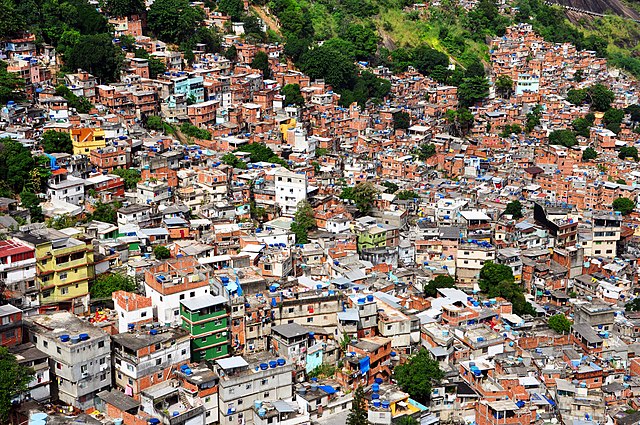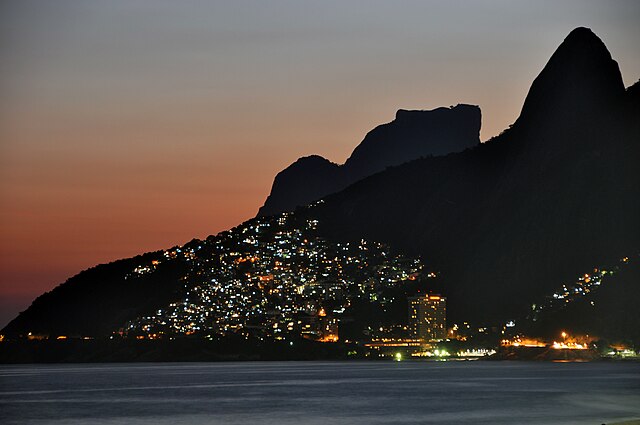The Pacifying Police Unit, abbreviated UPP, is a law enforcement and social services program pioneered in the state of Rio de Janeiro, Brazil, which aims to reclaim territories, most commonly favelas, controlled by gangs of drug dealers. The program was created and implemented by State Public Security Secretary José Mariano Beltrame, with the backing of Rio Governor Sérgio Cabral. The stated goal of Rio's government is to install 40 UPPs by 2014. By May 2013, 231 favelas had come under the UPP umbrella. The UPP program scored initial success expelling gangs, and won broad praise. But the expensive initiative expanded too far, too fast into dozens of favelas as state finances cratered, causing a devastating backslide that enabled gangs to recover some of their lost grip.
Composition of a unit of the Polícia Pacificadora (UPP), here on the occasion of the ceremony for the change of command of the units.
PMERJ arrive to reinforce the UPP in Rocinha after gunfire
Favela is an umbrella name for several types of working-class neighborhoods in Brazil. The term, which means slum or ghetto, was first used in the Slum of Providência in the center of Rio de Janeiro in the late 19th century, which was built by soldiers who had lived under the favela trees in Bahia and had nowhere to live following the Canudos War. Some of the last settlements were called bairros africanos. Over the years, many former enslaved Africans moved in. Even before the first favela came into being, poor citizens were pushed away from the city and forced to live in the far suburbs.
Rocinha is the largest hill favela in Rio de Janeiro (as well as in Brazil and the second largest slum and shanty town in Latin America). Although favelas are found in urban areas throughout Brazil, many of the more famous ones exist in Rio.
Rio's Santa Teresa neighborhood features favelas (right) contrasted with more affluent houses (left). The Christ the Redeemer, shrouded in clouds, is in the left background.
Then U.S. president Barack Obama visiting Rio's Cidade de Deus (City of God) favela. This favela started out as public housing built on marshy flatlands in the city's western suburbs.
The lights of Vidigal favela in Rio de Janeiro as seen from Ipanema and Leblon beaches. The cone spire to the far right is part of the Morro Dois Irmãos.






